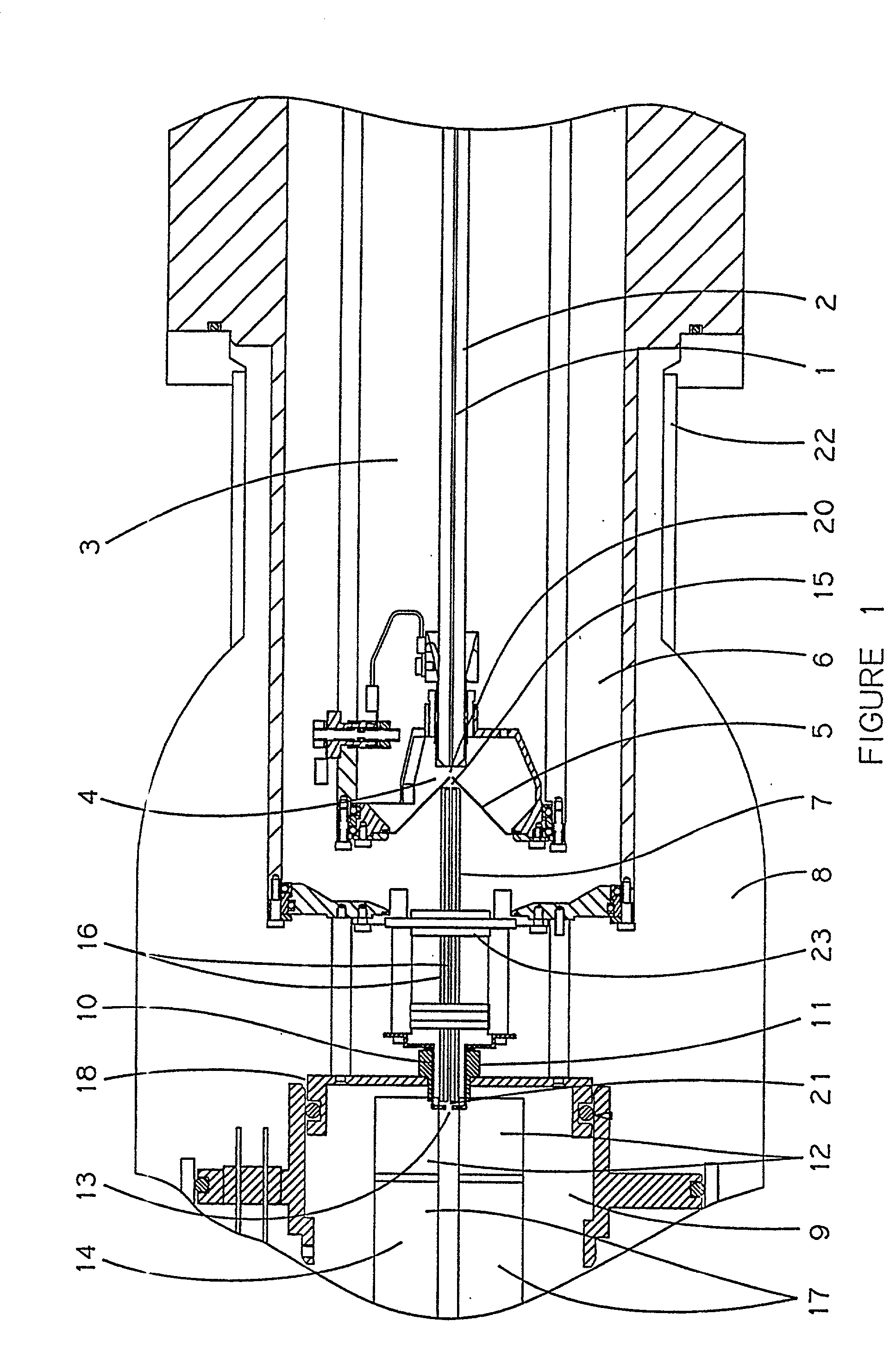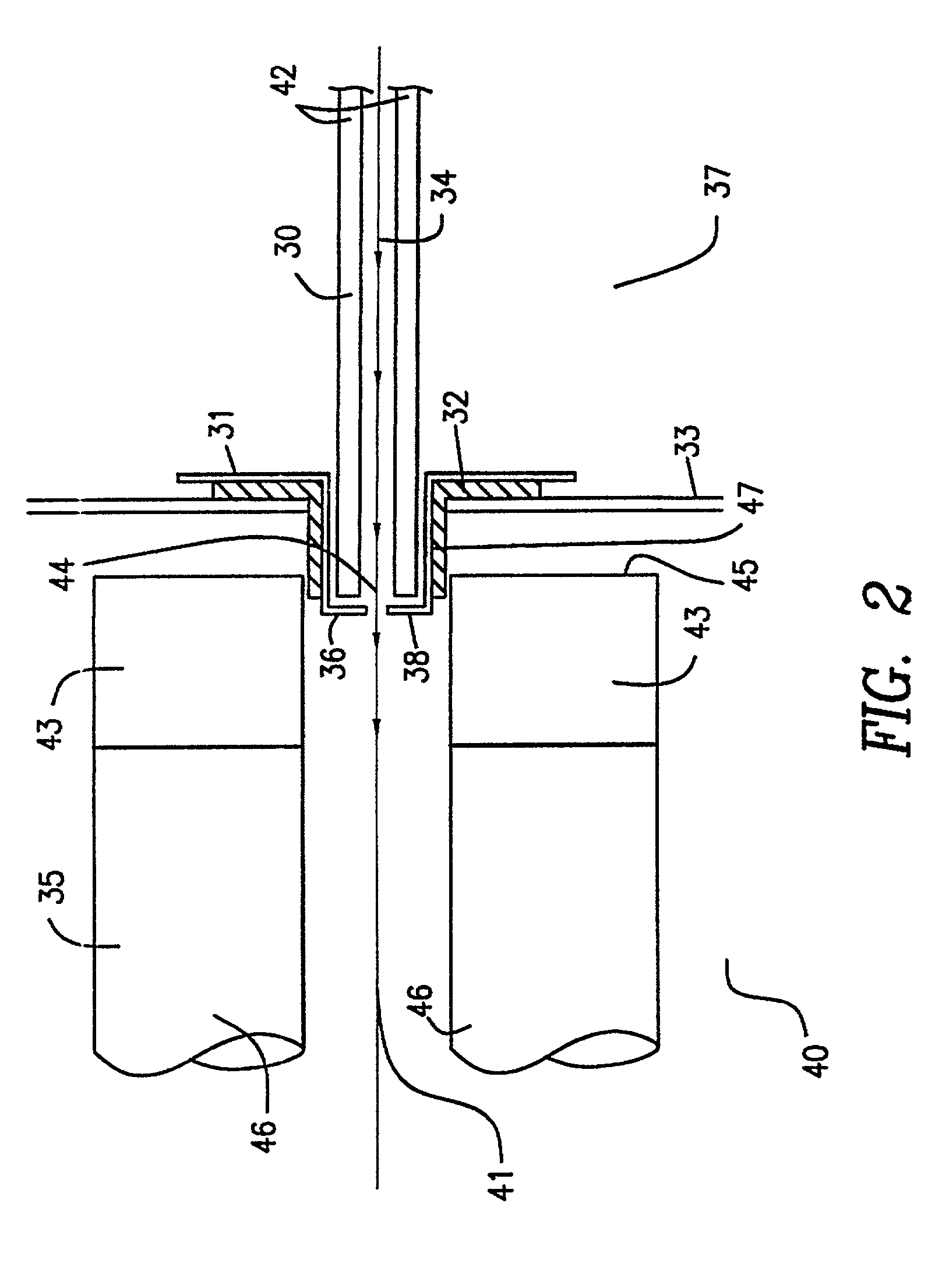Ion transfer from multipole ion guides into multipole ion guides and ion traps
a multi-pole ion guide and ion trap technology, applied in the direction of particle separator tube details, separation processes, mass spectrometry, etc., can solve the problems of ion losses in the entrance region, potential unfavorable trajectory, and field created by applied voltage, so as to reduce diameter, improve mass analysis resolution, and high ion transfer efficiency
- Summary
- Abstract
- Description
- Claims
- Application Information
AI Technical Summary
Benefits of technology
Problems solved by technology
Method used
Image
Examples
Embodiment Construction
[0021] A preferred embodiment of the invention is shown in FIG. 1. A multipole ion guide is configured with a small radial diameter such that the ion guide and a surrounding hat shaped electrostatic exit lens element and insulator can fit within a larger multipole ion guide, in this case illustrated as a quadrupole mass analyzer. The hat shaped exit lens is surrounded by an electrically insulating material to prevent the exit lens from contacting and electrically shorting to the larger multipole ion guide rods. Ions exiting the smaller ion guide through its exit lens are focused to the centerline of the larger ion guide and efficiently trapped even at low ion kinetic energies. The multipole ion guide with reduced radial dimensions produces a very small diameter ion beam which enters the larger ion guide close to the centerline. Ions can exit the small ion guide at very low kinetic energies relative to the offset potential of the larger ion guide and are trapped in the radial directi...
PUM
 Login to View More
Login to View More Abstract
Description
Claims
Application Information
 Login to View More
Login to View More - R&D
- Intellectual Property
- Life Sciences
- Materials
- Tech Scout
- Unparalleled Data Quality
- Higher Quality Content
- 60% Fewer Hallucinations
Browse by: Latest US Patents, China's latest patents, Technical Efficacy Thesaurus, Application Domain, Technology Topic, Popular Technical Reports.
© 2025 PatSnap. All rights reserved.Legal|Privacy policy|Modern Slavery Act Transparency Statement|Sitemap|About US| Contact US: help@patsnap.com



